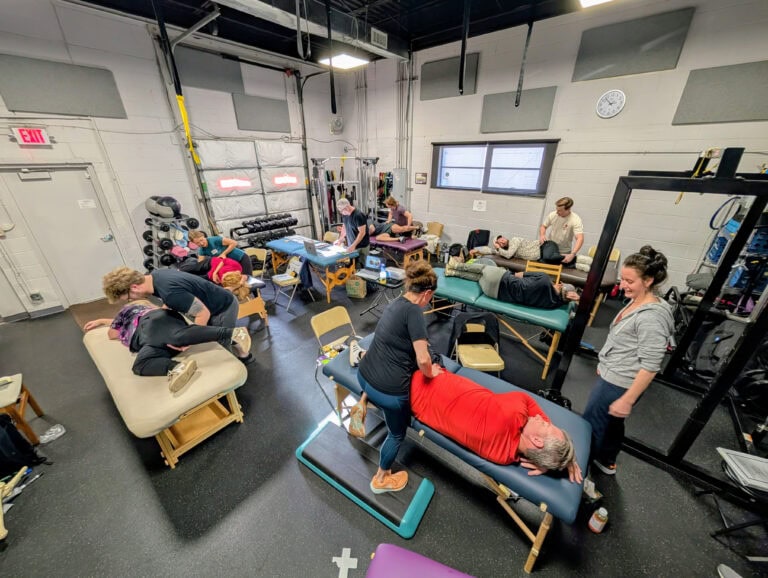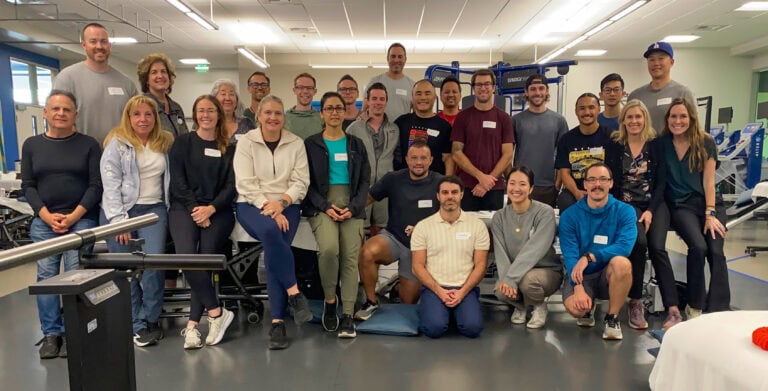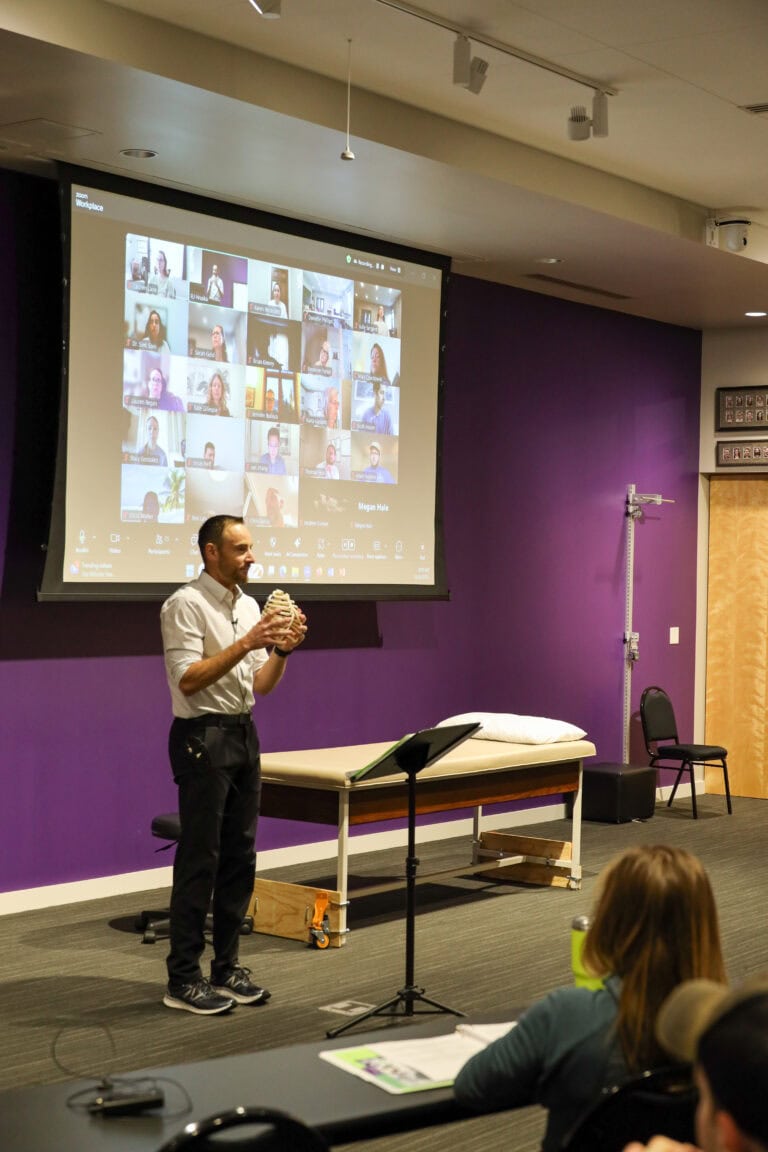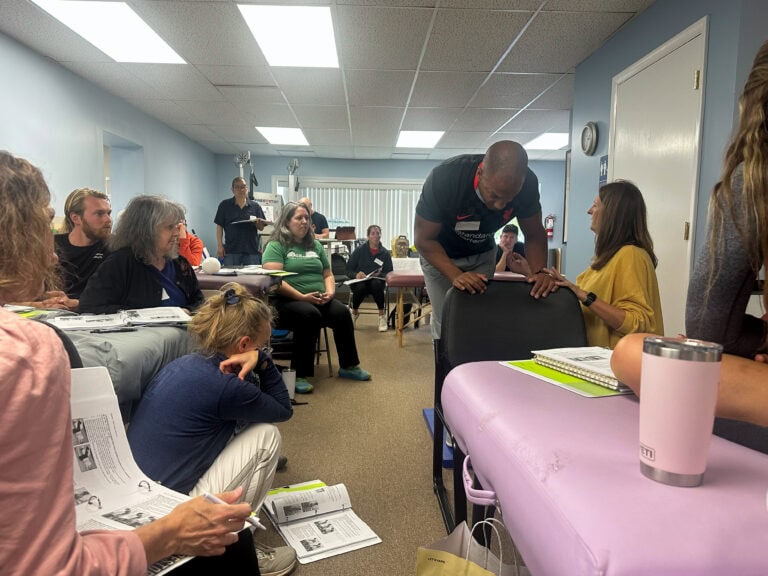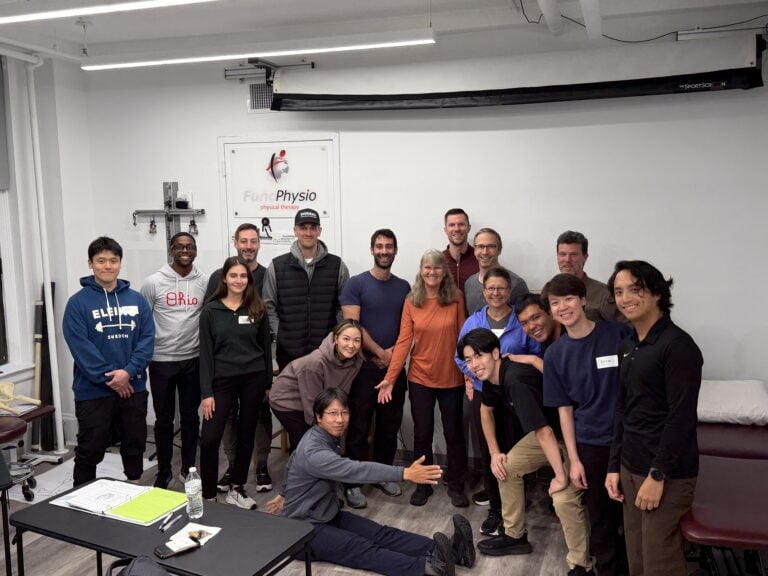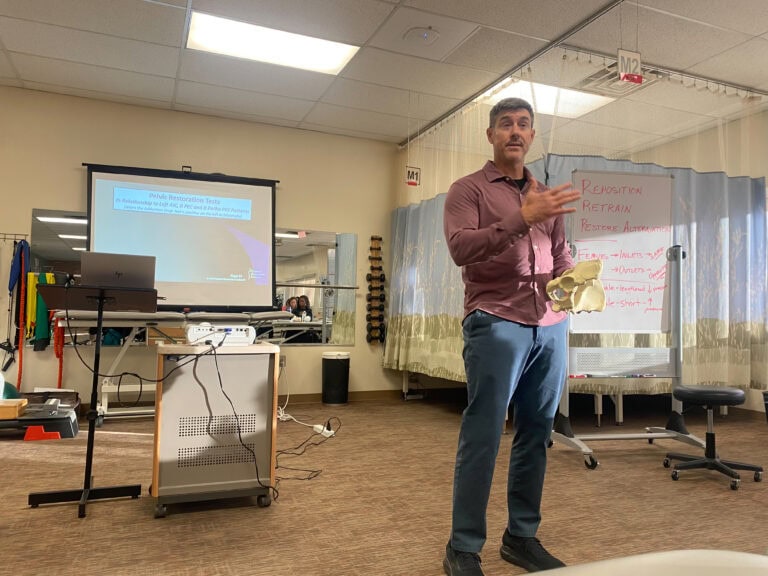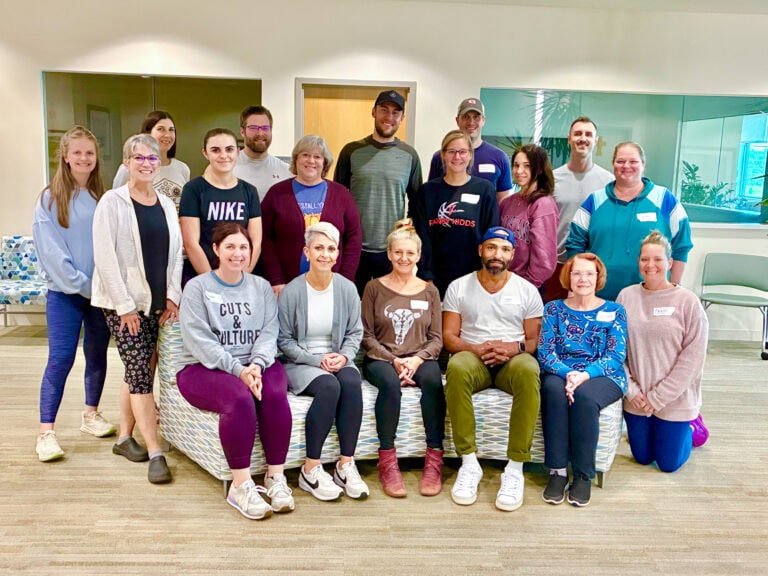The last Postural Respiration course of 2025 was hosted at Active Edge Physical Therapy in Tualatin, OR last weekend to a wide spectrum of health professionals including PT’s, two dentists, a Certified Sports Chiropractic Physician, an LCSW, strength and conditioning specialists and soft tissue practitioners. This was the first time I have taught Postural Respiration with two dentists in the group as they usually begin their PRI journey with Cervical Revolution then attend Occlusal Cervical Restoration. When asked what brought them to this course, their response was that they are interested in airway, tongue ties, TMD, posture and had they heard how significant PRI is to their patient care! In addition, they wanted to integrate with PRI practitioners for better outcomes for their patients.
This was a curious and energetic group with some of the best questions especially regarding rib rotation and Superior T-4 as these topics relate to dynamic posture and pathomechanics of respiration. This course is an eye opener as it relates to the asymmetrical diaphragm as being the primary muscle of respiration, spinal stabilizer and mover, and even a gastrointestinal sphincter at the crura attachments to the spine. The dental professionals in the course were interested in how Postural Respiration concepts fit with their dental model of practice and their questions were “on point” in a way that all of the students could learn regardless of professional background. From the topic of respiration, and this course being the flagship of PRI, all of the primary courses were touched upon in an integrated fashion and even secondary course concepts were mentioned, especially Cervical Revolution, and the relationship between the BC pattern as it relates to the neck via scalenes and SCM. The cervical axial rotation test taught in this course is the bridge test to Cervical Revolution and especially how Superior T-4 has an effect on not only the thorax but the entire axial skeleton including the neck and cranium.
Daniel Morland, PT and I were talking about one of his passions which is golf and he sees a lot of golfers. Just the topic of being able to orient a pelvis to the left via a L ZOA and L psoas inhibition was a great discussion for being able to rotate and follow through with a golf swing with significant reduction of lower back or left knee torque. The ability to shift mass, deliver air pressure sense, and reduce limitations of rotation was a key topic for sport performance and rehabilitation David Dunlap, CSCS flew all the way from NYC and could see the application of movement and position prep and restoration for his clients. Brand new PT Scout Hollister is a high level rode bicyclist and experienced personal experience of inhibition of hip flexors after the ZOA manual technique. And Brandon Garland, DC experienced a two person infraclavicular pump with a side lying technique from Myokinematic Restoration to demonstrate the integration of the primary courses as he was finally able to adduct a left femur much to the “oohs and aahs” of course attendees. Thank you to Azita, Christine, Daniel Cooper, Lisa, Alaina, , Taylor, Kaur, Liz, Malcom, Joel, Amy and Sonja for your interest and participation! And thank you much to Micah Frey, PT and Daniel Morlan, PT for hosting PRI. You have a great facility with such a convenient and charming small town for hosting a course and we look forward to returning!



